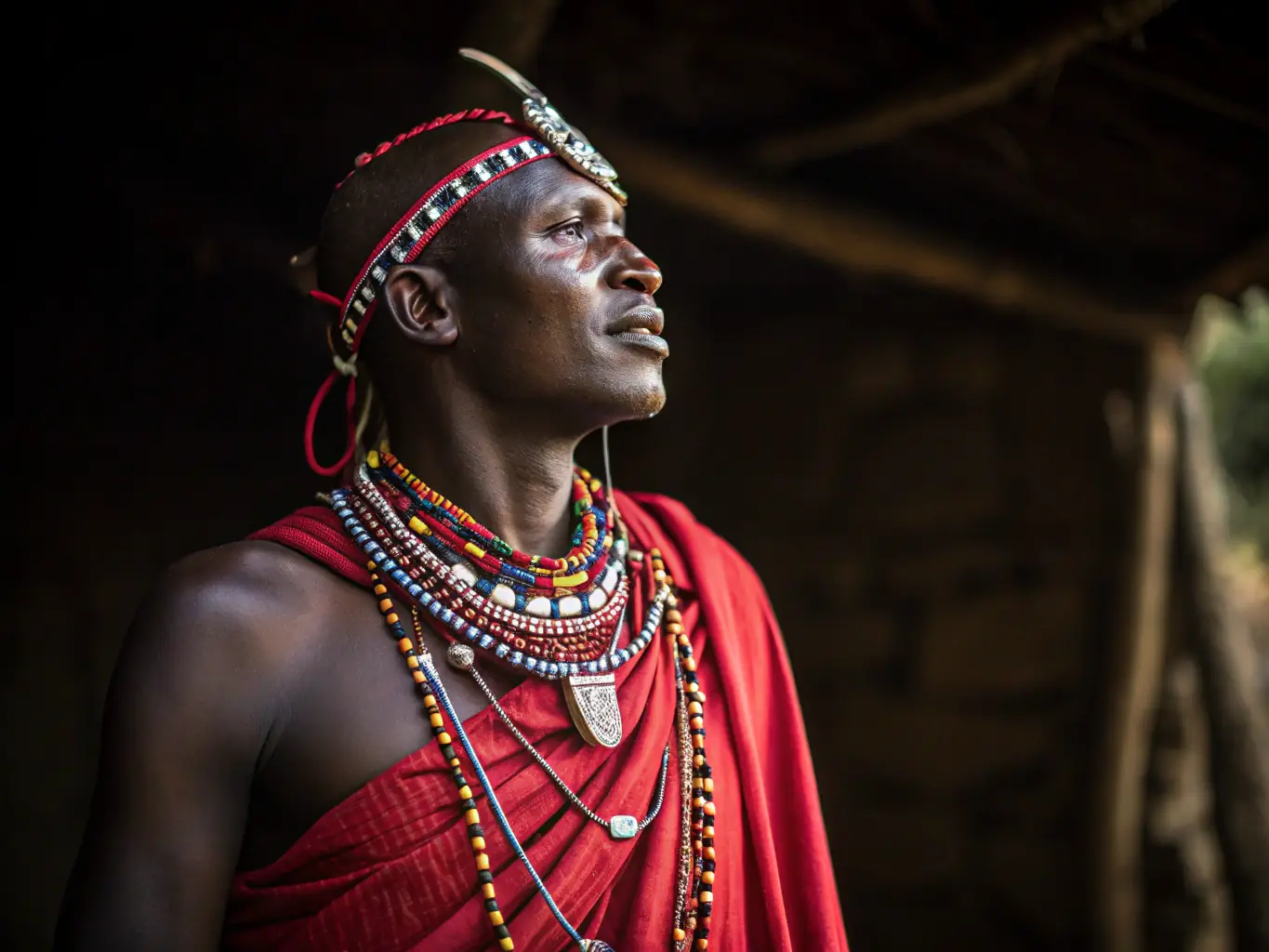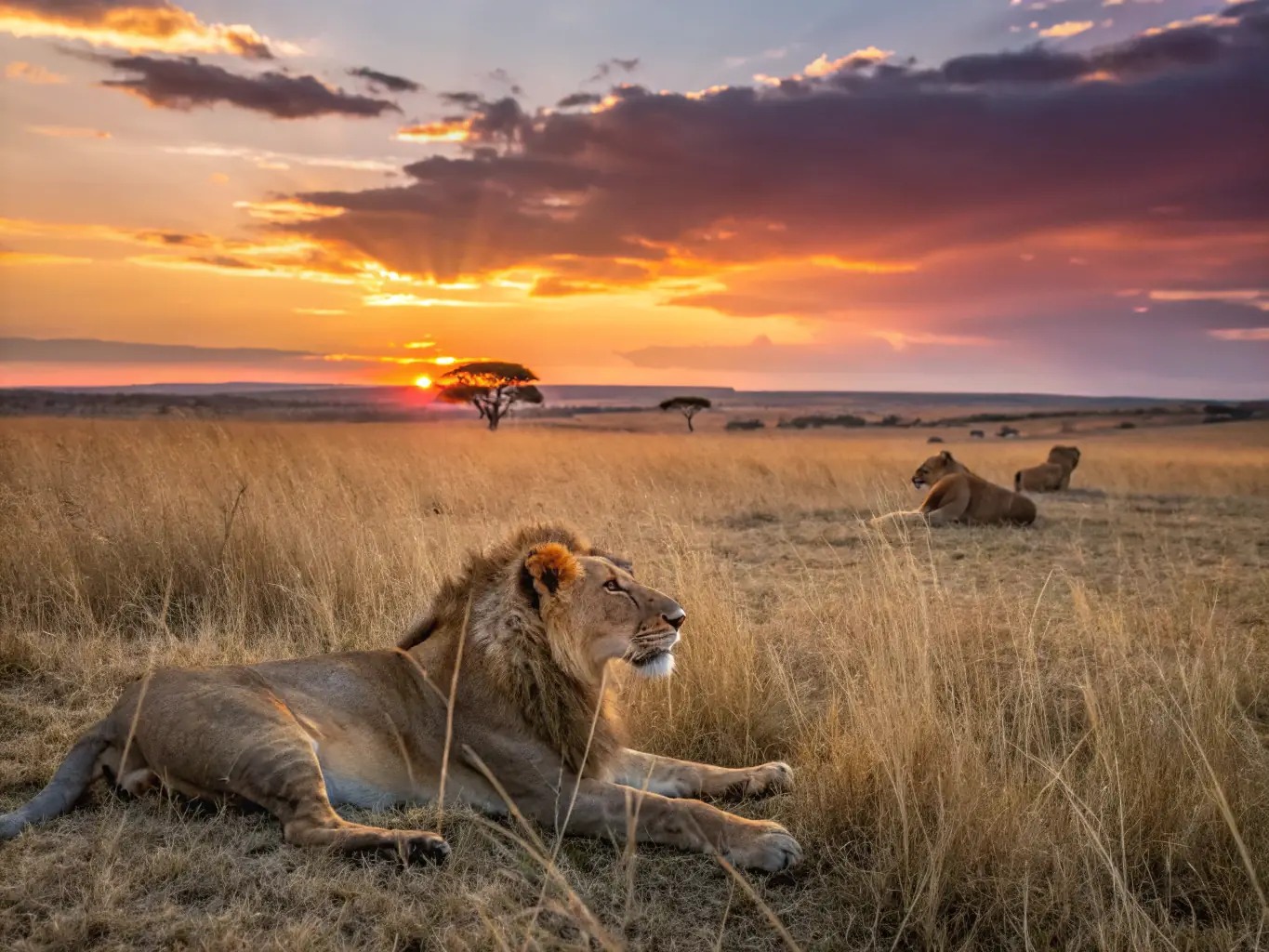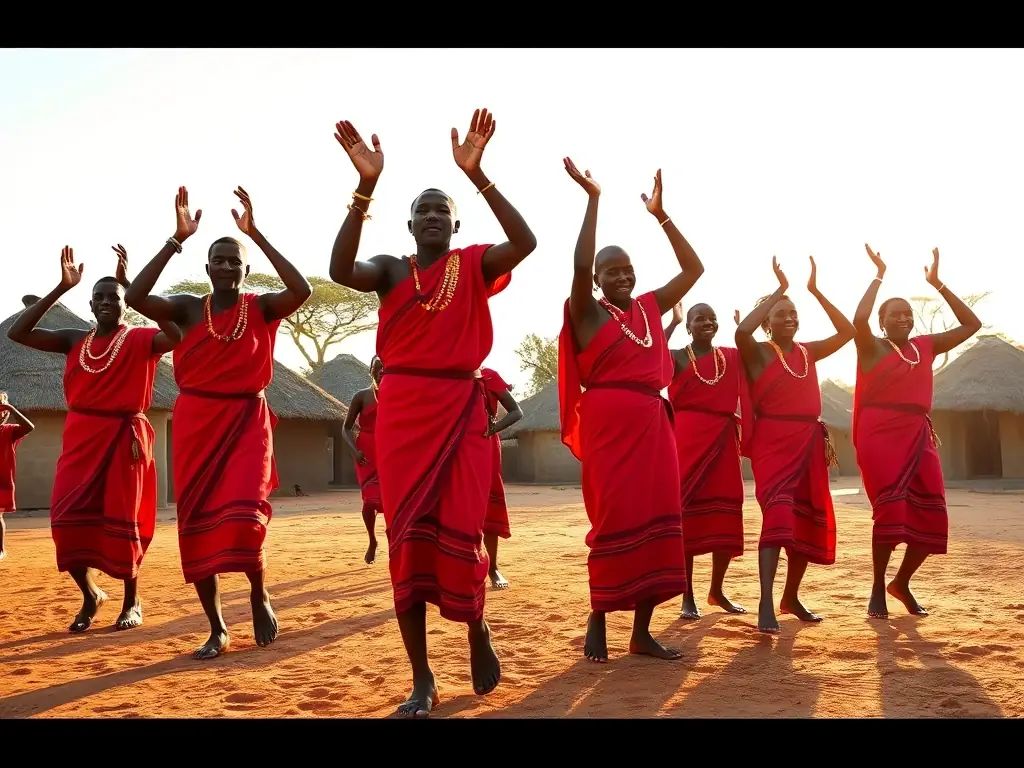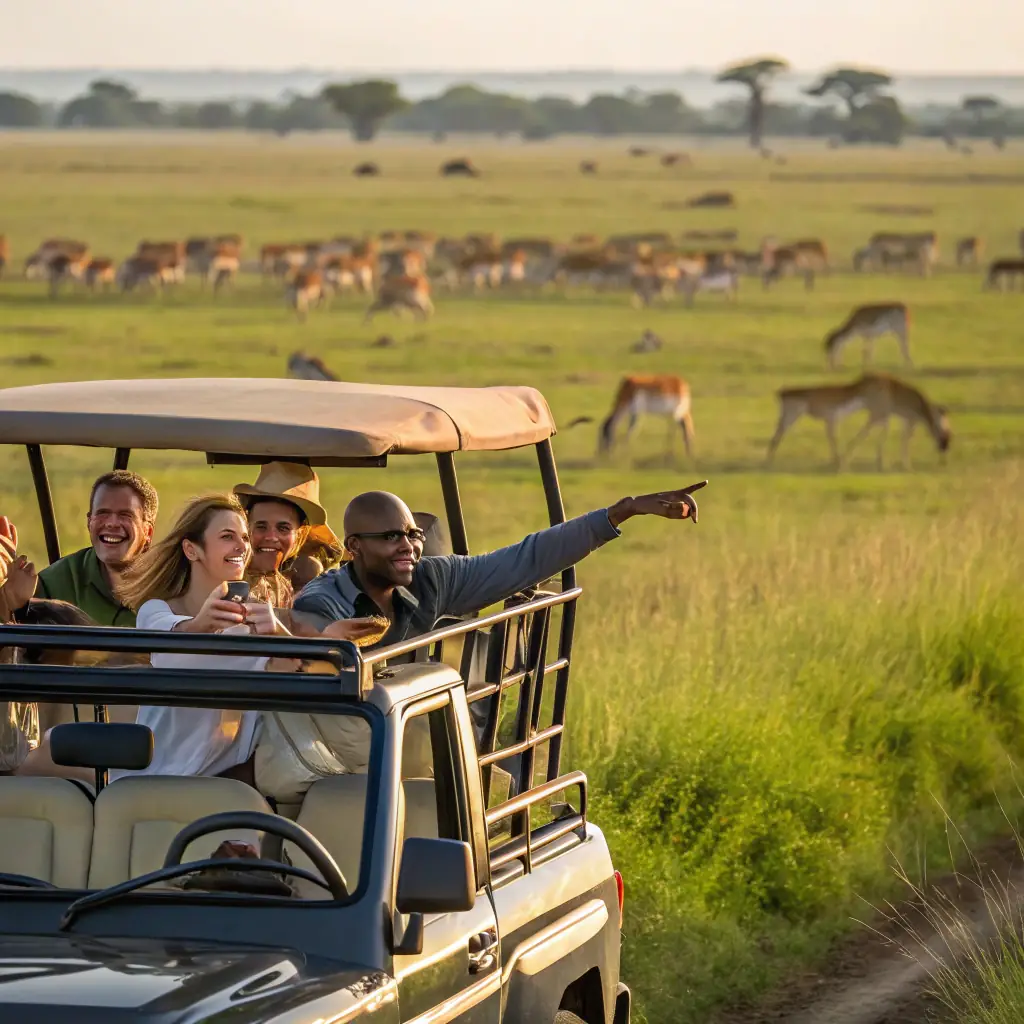
Explore Natural Wonders and Cultural Heritage
Kenya is one of Africa’s most iconic safari destinations, celebrated worldwide for its spectacular wildlife, dramatic landscapes, and vibrant cultural traditions. Known as the home of *Magical Kenya*, the country combines the thrill of spotting the Big Five with the warmth of diverse communities whose traditions remain deeply rooted. From the rolling savannahs of the Maasai Mara to the coastal shores of Mombasa, Kenya offers travelers an immersive journey into nature and heritage.

: Wildlife and Culture Await

Kenya's wildlife

Local Culture
Unforgettable Journeys Await with Africa Explorers
- Expertly Curated Itineraries
- Personalized Travel Planning
- 24/7 On-the-Ground Support

The Wildlife Wonders of Kenya
The Maasai Mara
No Kenya safari is complete without visiting the Maasai Mara National Reserve, famous for the annual Great Wildebeest Migration, often called the “eighth wonder of the world.” Between July and October, millions of wildebeest, zebras, and gazelles thunder across the plains in search of greener pastures, shadowed by predators like lions, cheetahs, and hyenas. Year-round, the Mara remains one of the best places in Africa to spot the Big Five — lion, leopard, elephant, buffalo, and rhino.
Amboseli National Park
Set against the stunning backdrop of Mount Kilimanjaro, Amboseli is renowned for its large herds of elephants. Visitors can witness these gentle giants crossing dusty plains, often framed by Africa’s tallest peak. The park is also home to giraffes, wildebeest, zebras, and over 400 bird species, making it a paradise for photographers.
Samburu National Reserve
In northern Kenya, Samburu offers a more rugged safari experience with semi-arid landscapes and unique wildlife not often found in southern parks. Species like the reticulated giraffe, Grevy’s zebra, Somali ostrich, and gerenuk — known as the “Samburu Special Five” — thrive here, alongside elephants and big cats. Samburu is also a stronghold for conservation programs supporting endangered species.
The Great Rift Valley and Birdlife
The Great Rift Valley is not only a geological marvel but also a birdwatcher’s dream. Lakes like Nakuru, Naivasha, and Bogoria host flamingos, pelicans, cormorants, and fish eagles. Lake Nakuru National Park is a sanctuary for rhinos, while Lake Naivasha offers boat safaris among hippos and diverse birdlife. Kenya is home to more than 1,100 bird species, making it one of Africa’s richest birding destinations.
Coastal Ecosystems
Beyond the savannahs, Kenya’s coast offers marine wildlife and pristine beaches. The Watamu Marine National Park and Kisite-Mpunguti Marine Reserve protect coral reefs, dolphins, sea turtles, and tropical fish. Divers and snorkelers can explore vibrant underwater worlds, adding a unique dimension to a Kenyan safari.
The Cultures of Kenya
The Maasai
Perhaps the most recognized cultural group in Kenya, the Maasai people embody resilience and tradition. Known for their distinctive red shukas (robes), beadwork, and warrior dances, the Maasai continue to practice semi-nomadic pastoralism. Cultural visits allow travelers to learn about their way of life, traditional homesteads, and conservation efforts that link communities with wildlife tourism.
The Swahili Coast
Along the Indian Ocean, Swahili culture blends African, Arab, and Persian influences. Coastal towns like Mombasa and Lamu are steeped in history, with winding streets, carved wooden doors, bustling markets, and Islamic architecture. Traditional Swahili cuisine, infused with spices, seafood, and coconut, offers visitors a delicious taste of Kenya’s multicultural heritage.
The Kikuyu and Central Highlands
The Kikuyu, Kenya’s largest ethnic group, live mainly around the fertile central highlands near Mount Kenya. Their culture is rich in folklore, music, and agricultural traditions. Sacred sites and community-run tours provide insight into Kikuyu customs, crafts, and modern ways of life that remain tied to ancestral roots.
Other Communities
Kenya has more than 40 ethnic groups, including the Samburu, Turkana, Luo, Kalenjin, and Luhya, each with unique languages, attire, and traditions. Festivals, markets, and homestay experiences allow visitors to engage with this cultural mosaic in meaningful ways.
Heritage and History
Kenya is home to several UNESCO World Heritage Sites, including Lamu Old Town, a preserved Swahili settlement, and the Sacred Mijikenda Kaya Forests, which embody spiritual traditions. Prehistoric sites like the Koobi Fora on Lake Turkana showcase Kenya’s role as the “cradle of humankind,” with fossil evidence tracing back millions of years. Museums in Nairobi and Kisumu further highlight Kenya’s archaeology, art, and independence history.
Conservation and Sustainable Travel
Kenya has been a leader in wildlife conservation for decades. Community conservancies, such as those managed by the Northern Rangelands Trust, empower local people to protect biodiversity while benefiting economically from eco-tourism. Sanctuaries like the David Sheldrick Wildlife Trust (elephant orphanage) and Ol Pejeta Conservancy (home to the last northern white rhinos) showcase Kenya’s commitment to safeguarding endangered species.
Travelers are increasingly seeking sustainable tourism experiences, and Kenya delivers through eco-lodges, responsible safari operators, and community-based cultural tours. Supporting these initiatives ensures that tourism contributes to conservation and local livelihoods.
Music, Dance, and Crafts
Kenya’s cultural expression thrives in its music and crafts. Traditional instruments like drums, lyres, and horns accompany dances performed during ceremonies and festivals. Contemporary Kenyan music blends genres such as Benga, Afro-fusion, and gospel. Local crafts, from Maasai beadwork to Kikuyu carvings and Swahili textiles, offer visitors unique souvenirs that carry cultural meaning.
Travel Ressources
Kenya Visa & Entry Requirements
Since January 2024, Kenya has abolished visa requirements for all foreign visitors, replacing them with an Electronic Travel Authorisation (eTA) system. Travelers must apply for an eTA at least 3 days in advance, up to 90 days prior. The eTA allows a single entry but permits re-entry to Kenya from other East African Community (EAC) countries if still valid. Requirements include a passport photo, flight itinerary, and proof of accommodation (hotel reservation or invitation letter). A yellow fever vaccination certificate is required if arriving from endemic countries. The East Africa Tourist Visa (USD 100, 90 days, multiple entry) covers Kenya, Rwanda, and Uganda but must be applied for through the first country of entry. Citizens of EAC countries (e.g., Burundi, Rwanda) are exempt.
Health & Safety
Yellow fever vaccination is mandatory for travelers from high-risk countries; malaria prophylaxis is recommended, especially in coastal and rural areas. Hepatitis A, typhoid, and routine vaccinations (MMR, polio) are advised. Mpox cases have been reported in Africa; monitor WHO updates. Crime rates are moderate in Nairobi and Mombasa; avoid nighttime travel and secure valuables. Political protests can occur; check travel advisories.
Transport & Flights
Jomo Kenyatta International Airport (Nairobi) and Moi International Airport (Mombasa) are major hubs with flights from Europe, Asia, and the Middle East. Airlines like Kenya Airways, Ethiopian Airlines, and Qatar Airways operate frequently. Domestic flights connect to safari destinations (e.g., Maasai Mara). Public transport includes matatus (minibuses) and buses, but they can be crowded; private taxis or rental cars are safer.
Currency & Languages
Currency: Kenyan Shilling (KES). USD is widely accepted in tourist areas. English and Swahili are official languages; English is common in business and tourism. Local languages like Kikuyu and Luo are spoken regionally.
Travel Tips
Best time for safaris: July–October (Great Migration).
Use reputable tour operators for safaris; book through platforms like SafariBookings.
Carry USD for visa fees or tips; ATMs are available in cities.
Dress modestly in non-tourist areas; respect local customs.



